Northeast Harbor reset: After two major downtown fires, rebuilding includes a rethinking
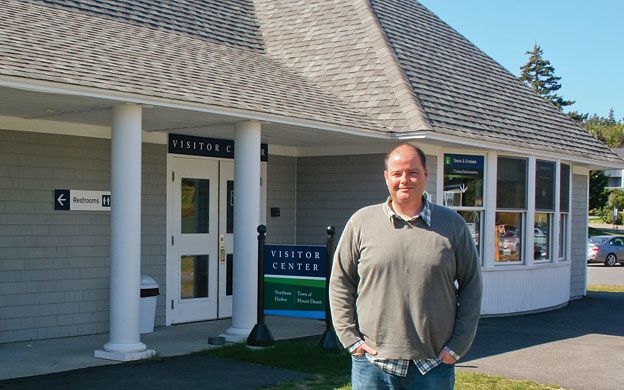 PHOTo / Laurie Schreiber
Mount Desert Chamber of Commerce President Matt Hart outside the new visitors' center in Northeast Harbor.
PHOTo / Laurie Schreiber
Mount Desert Chamber of Commerce President Matt Hart outside the new visitors' center in Northeast Harbor.
Several years after two devastating downtown fires, Northeast Harbor is finally seeing a resurgence.
A fire in 2008 destroyed three buildings on Main Street, including street-level commercial enterprises — the Wingspread Gallery, Colonel's Deli and the Joy Building — and upper-story, affordable residences. The 2009 blaze destroyed a fourth Main Street commercial building that contained The Tan Turtle, a seasonal restaurant, and upstairs housing.
The events coincided with the early years of the recession, which stalled the discretionary spending on which tourist communities depend.
Together, these circumstances have tested the spirit of this community, as year-round and summer residents seek to shed a “ghost town” atmosphere, putting together public and private initiatives to rebuild businesses and housing and revitalize both summer and year-round commerce.
“We were in a lull for several years, where nothing was happening,” says Mount Desert Chamber of Commerce President Matt Hart. “I think we bottomed out, and now there's a palpable feeling that we turned the corner and things are moving in positive directions.”
“People were discouraged after the fire,” says Nancy Ho, who owns the Joy Building lot and the next-door building that contains the Kimball Shop and Boutique, the boutique also considerably damaged but since repaired. “But I think the mood has shifted and there's been a nice resurgence bringing Northeast Harbor back. Both summer and year-round communities have been working together.”
Plans for specific lots developed to varying degrees. The owner of the Tan Turtle lot retails outdoor sculptures. The Wingspread lot was sold. Ho's husband, Bob, planned to look for investors to redevelop the Joy lot, but passed away before the plan materialized. Colonel's, destroyed in the first fire, was rebuilt by owners Stephanie and Mark Reece and was back in business by summer 2009.
There was no question they'd rebuild, says Stephanie Reece. The business was started by Mark's grandparents four decades ago.
“We just had to figure out how to make it work,” she says.
Compounding the loss of the business was losing it during the peak earning months, in the summer. In addition to lost revenue, they still had to deal with outstanding bills. Insurance was enough only to cover lost infrastructure, so to rebuild they had to take out a loan. Since reopening, business has been steady, but the Reeces say the recession was a double blow.
“It didn't help. I think it just all hit Northeast Harbor pretty hard and pretty suddenly,” says Stephanie Reece, adding: “I think Northeast Harbor is bouncing back.”
“I think there's always been community,” says Ho. “But you need more than just a sense of community. You need money behind it to get the economy started.”
An enclave perhaps touted most as a favorite summer home of the nation's wealthy, the economy — anchored by Main Street and a town marina — is partially propelled by a robust tax base and the seasonal services required to tend mansions and yachts.
Northeast Harbor is a village within the town of Mount Desert, one of four towns on Mount Desert Island. Situated near Acadia National Park, Northeast Harbor depends on tourists to patronize galleries, restaurants, music venues and other cultural offerings.
Most activity shuts down by late fall, leaving the year-round population with their school, library, community hall, market and the like. The harbor remains active with lobster boats and the Maine Sea Coast Mission ship Sunbeam.
'Way finding' efforts
An economic study, published in 2012, found this may not be enough to sustain the business climate and an income-diverse, year-round population. The report, which was commissioned by the town of Mount Desert and the Summer Residents Association and carried out by the Boston-based Urban Land Institute, uncovered underlying problems that predated the fires.
Swollen real estate prices, including summer homes averaging $500,000, made it impossible for low- and moderate-income residents to find affordable, year-round housing. Over time, the commercial district became oriented toward summer residents and visitors. An attendant decrease is seen in the number of year-round businesses, population and school enrollment.
In response, the town and Summer Residents Association hired a part-time consultant to oversee economic development, Jacqueline Hewett. Over the past year, Hewett has developed ways to attract more visitors and make it easier for them to find their way around. For instance, “way finding” signs help people in cars navigate Northeast Harbor. The campaign also includes improved signage around the chamber's information building in the harbor, a “breadcrumb” signage trail from the harbor to Main Street and two directory kiosks that list businesses in the village and show their locations. The signs and related materials cost $40,000, funded by the business community and the Summer Residents Association.
No budget for marketing
Another initiative leverages existing assets with community events.
“We need to market the businesses that are here in a more aggressive manner,” Hewett says. “But the businesses have no budget for marketing. They're just trying to keep the doors open.”
The town, allocating $5,000, formed its first-ever events committee, which leverages sponsors and partnerships to produce and distribute promotional materials for longstanding events as well as new activities designed specifically to attract visitors — tall ship visits, antique car shows, weekly movies by the harbor, art walks on Main Street, horse-drawn carriage rides. A trolley company from neighboring Bar Harbor was brought in to give tours, with the town offering parking and the chamber providing maps and discount coupons.
Aside from an increase in visitor center sign-ins, there are no hard numbers to tell how well these initiatives worked. But July and August were hopping, Hewett says. “A lot of it is generating the buzz,” she says. It's people saying, “'There's a great reason to come to Northeast Harbor.'”
Says Hart of the Mount Desert chamber, “We're on the lookout for and open-minded to anything that will bring visitors to the community.”
This all coincided with another development, when summer residents John and Johanna Boynton purchased the lot that had housed the Wingspread Gallery and a defunct pharmacy, also on Main Street.
Johanna's family has spent summers in Northeast Harbor for several generations. Through marriage, John now feels equally attached. They watched the fire that August night in 2008, their house at the end of Main Street.
Since then, “we dreamed about what we might do to help rejuvenate Northeast Harbor,” John Boynton says.
Taking commitment to a whole new level, the Boyntons, with backgrounds in technology, real estate and development, formed Rising Tide Partners LLC to redevelop the pharmacy first, recreating the old soda fountain where locals fondly recall hanging out decades ago, and second-floor space for communal office use. The pharmacy will open in the summer of 2015.
“One of the downsides of a seasonal economy is that businesses close in the winter. We want this space to be a beehive of activity year-round,” Boynton says. “We think that's a great first step to bring new energy and new optimism to the community.”
Another phase calls for a 10,000 square feet devoted to retail space and year-round apartment rentals, with construction set to begin next summer.
Other developments include the overhaul of the marina's land-side facilities and the purchase and transformation of a longtime restaurant, now called The Watermark. New businesses have opened or moved here — galleries, catering companies and a clothes store.
For example, the new Star Gallery, just off Main Street, is in its second year. Owner Katherine Bucklin says she and her husband were inspired by their love of the community. Exhibit openings this year, bringing more than 100 people each time, signify future potential, she says.
“I've put my money and my mark here,” she says. “It's a wonderful town. It's quaint, it's quiet. The people are fantastic. And it's safe for kids. I grew up biking here — we'd go from house to tennis lesson to pool to stores. It's nice to see that tradition continue.”
Summer residents also have much to do with the village's ongoing revitalization. Their commitment is not a surprise to year-rounders. Many summer families go back generations.
“It was critical for us to have the summer residents involved,” says the chamber's Hart.
Kathe McCoy, president of the Summer Residents Association, fondly recalls childhood summers here, in an era when three-month stays were common.
McCoy says the organization favors long-term planning for the sake of the year-round community. Partnership is essential. McCoy says: “If we work together, it costs less and we can get more accomplished, working for the betterment for all.”
Much work remains for deeper issues related to housing and year-round commerce.
There's a reason why the other lots haven't been rebuilt yet, says Hewett.
“It's expensive and the season's so short. You buy the lot, you build the building and then you can only run the business three or four months a year. It's really hard to make those numbers work. That's why we're looking at lengthening the season, increasing the number of visitors.”
At the same time, she says, residents don't want the jam-packed streets of larger tourist towns.
“Economic development is never something that happens overnight, but I think we're laying the groundwork,” Hewett says. “There's a ton of people committed to this, both the year-round and summer community.”
Says Hart, “I think people realized you can't just sit on the sidelines and expect these problems to solve themselves.”

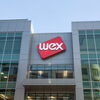
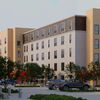
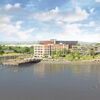
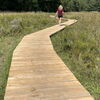





Comments